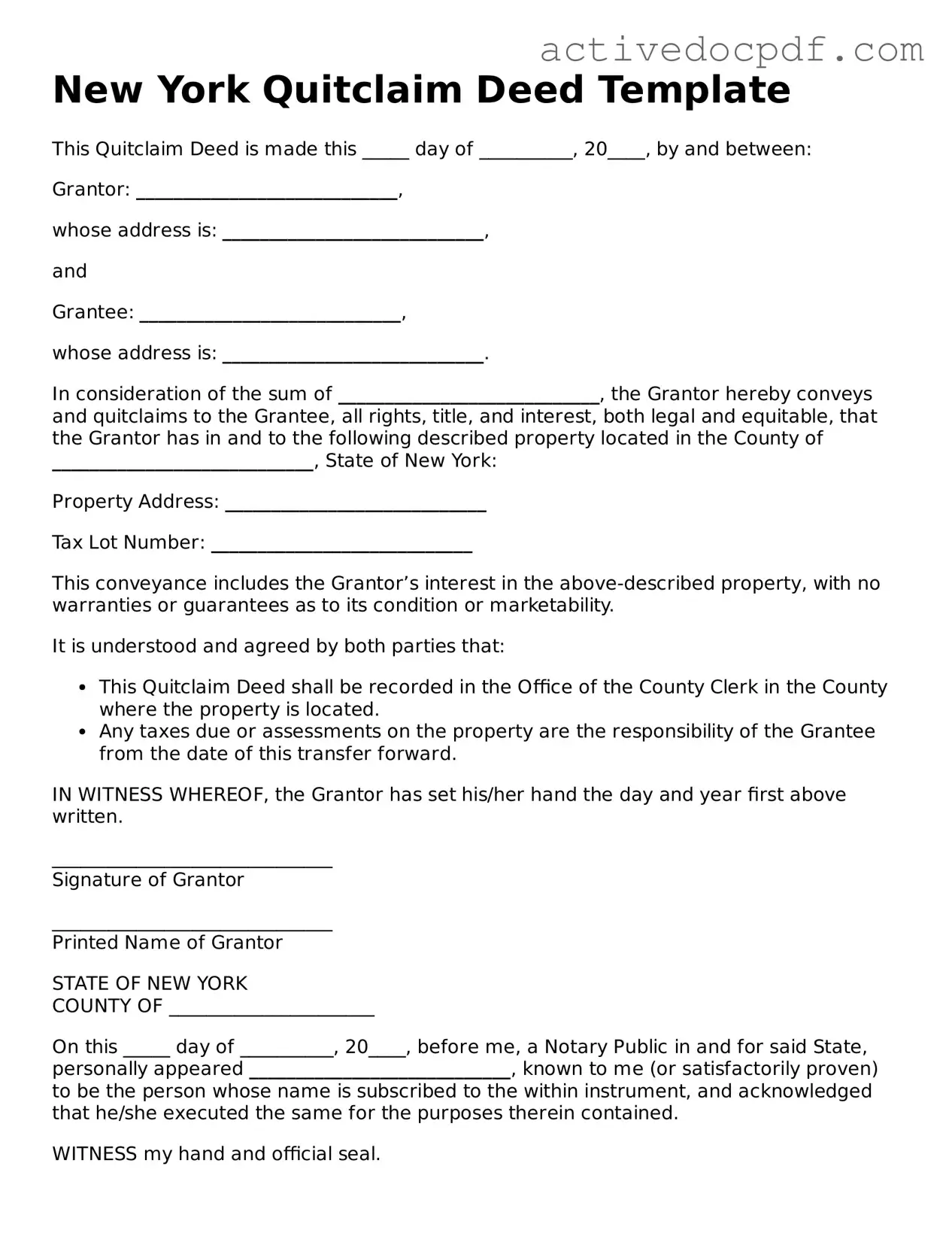Guide to Filling Out New York Quitclaim Deed
Once you have your New York Quitclaim Deed form, it’s time to fill it out accurately. This form transfers property ownership from one party to another. After completing the form, you will need to sign it in front of a notary public, and then file it with the appropriate county office.
- Begin by entering the date at the top of the form.
- Fill in the name of the grantor (the person transferring the property) in the designated space.
- Provide the grantor's address, including city, state, and zip code.
- Next, write the name of the grantee (the person receiving the property) in the appropriate section.
- Include the grantee's address, ensuring it is complete with city, state, and zip code.
- Describe the property being transferred. Include details such as the street address, city, and any relevant tax identification numbers.
- Specify the consideration amount, which is typically the price paid for the property, or state “for love and affection” if applicable.
- Have the grantor sign the form where indicated. This signature must be done in front of a notary public.
- Complete the notary section by having the notary sign and stamp the document.
- Make copies of the completed deed for your records.
- Finally, file the original deed with the county clerk’s office where the property is located.
